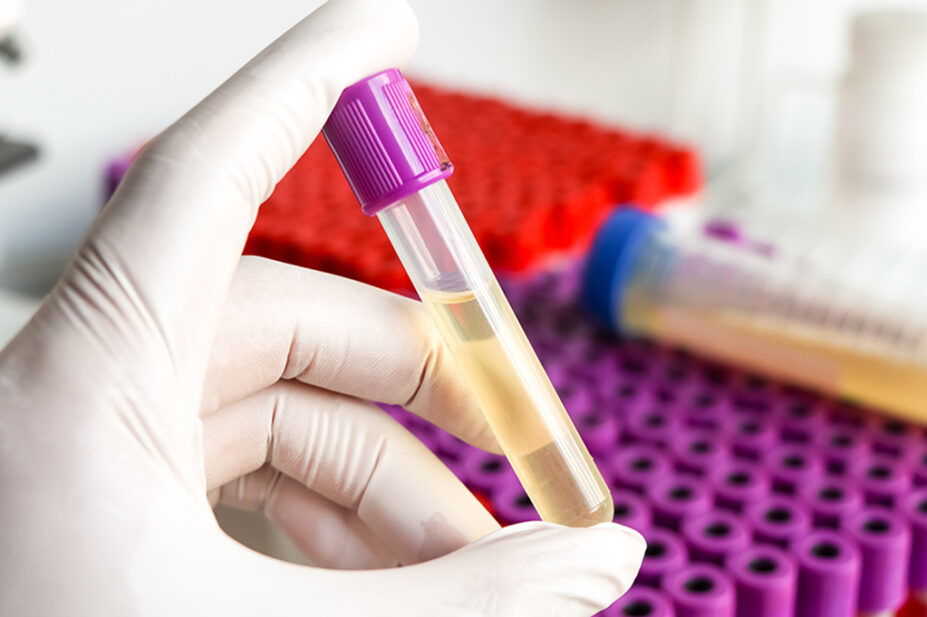
Shutterstock.com
A test that can diagnose a urinary tract infection (UTI) — and identify the antibiotics needed to treat it — in 45 minutes has won the £8m ‘Longitude Prize on Antimicrobial Resistance’ (AMR).
The prize is run by Challenge Works, part of the innovation agency Nesta, which selected Sysmex Astrego’s ‘PA-100 AST System’ as the winner of the award, from entries submitted by more than 250 teams around the world.
The diagnostic test, based on technology developed at Uppsala University in Sweden, uses a 400 microlitre sample of urine on a smartphone-sized cartridge to identify the presence of a bacterial infection in 15 minutes and the antibiotic required within 45 minutes.
The POC test is able to identify a specific infection and its susceptibility to certain drugs by observing how the infection responds in real time to different antibiotics. As a result, it is hoped it will enable ‘retired’ first-line antibiotics to be brought back into use.
Mikael Olsson, chief executive and co-founder of Sysmex Astrego, said the PA-100 AST System was already being rolled out in Europe, with the test being evaluated in GP surgeries across the UK as part of a study with the University of Oxford, as well as work with regulators to secure additional approvals.
“The £8m prize will support us to tailor the test for use with different kinds of UTIs and antibiotics,” he said.
In May 2023, the National Institute for Health and Care Excellence (NICE) said that Sysmex Astrego’s PA‑100 analyser with the PA AST panel U‑0501 was one of four POC tests for UTIs that “show promise” but required further evidence on their accuracy.
At the time, NICE guidance said that the system “is also being assessed in the [University of Oxford’s] ‘TOUCAN’ study, which is evaluating the accuracy of new POC tests compared with current standard testing for women who consult their GP with symptoms of a UTI”.
The Longitude Prize relaunched in 2014 to focus on AMR, with the aim of incentivising the creation of new, faster diagnostic tests to identify whether an infection is bacterial and the right antibiotic to prescribe to slow the spread of antibiotic-resistant infections.
Current UTI laboratory test processes take two to three days, which has led to a prevalence of ‘just-in-case’ antibiotic prescribing, promoting the development of antibiotic resistance.
Dame Sally Davies, UK special envoy on antimicrobial resistance, former England chief medical officer and Longitude committee member, commented: “We can no longer afford ‘just-in-case’ prescribing of antibiotics.
“The Longitude Prize winner lays the groundwork for a sea-change in how we manage these precious medicines, where healthcare workers are supported with rapid and relevant diagnostic tests to make the best decisions for their patients with confidence that they are prescribing the right drug, first time.”
In 2019, antibiotic-resistant infections killed 1.3 million people around the world and contributed to the deaths of 5 million people. By 2050, it is predicted antibiotic-resistant infections will cause 10 million deaths annually.
UTIs are the second most common reason for prescribing an antibiotic. Around 50–60% of women will develop a UTI in their lifetime and up to half of the infection-causing bacteria are resistant to at least one antibiotic.
Johan Elf, founder of Astrego Diagnostics and professor of physical biology at Uppsala University, said the prize had been “incredibly important” in shaping the PA-100 System.
“When we heard about the Longitude Prize, we realised that the technology could be really useful in the fight against AMR, and the prize criteria have guided our work to develop a transformative test,” he said.
In 2019, an AMR progress review concluded that little advancement had been made to transform research or develop incentives for new antibiotics, vaccines and diagnostics, with the lack of progress to drive POC diagnostics development described as “a failing”.


